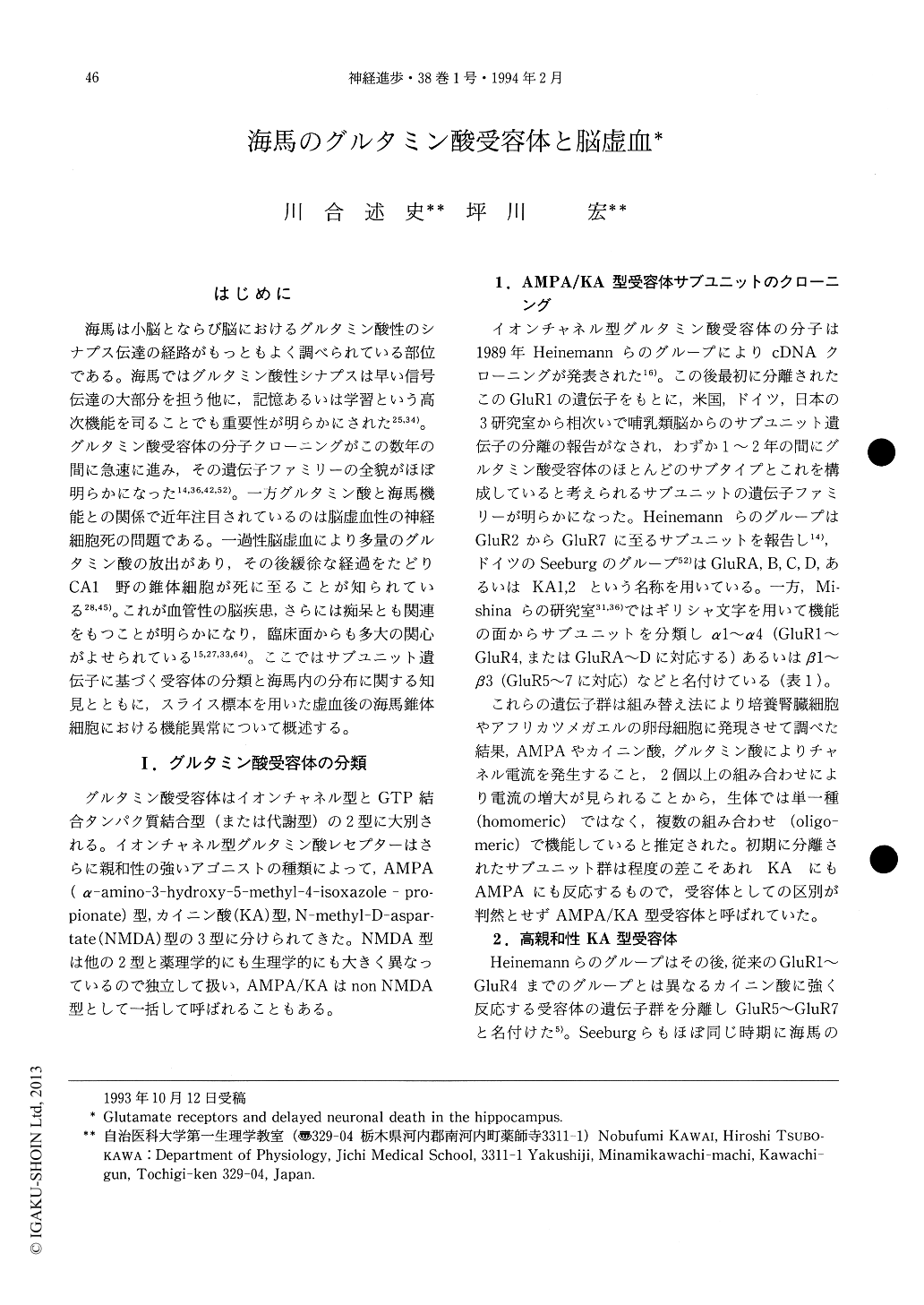Japanese
English
- 有料閲覧
- Abstract 文献概要
- 1ページ目 Look Inside
はじめに
海馬は小脳とならび脳におけるグルタミン酸性のシナプス伝達の経路がもっともよく調べられている部位である。海馬ではグルタミン酸性シナプスは早い信号伝達の大部分を担う他に,記憶あるいは学習という高次機能を司ることでも重要性が明らかにされた25,34)。グルタミン酸受容体の分子クローニングがこの数年の間に急速に進み,その遺伝子ファミリーの全貌がほぼ明らかになった14,36,42,52)。一方グルタミン酸と海馬機能との関係で近年注目されているのは脳虚血性の神経細胞死の問題である。一過性脳虚血により多量のグルタミン酸の放出があり,その後緩徐な経過をたどりCA1野の錐体細胞が死に至ることが知られている28,45)。これが血管性の脳疾患,さらには痴呆とも関連をもつことが明らかになり,臨床面からも多大の関心がよせられている15,27,33,64)。ここではサブユニット遺伝子に基づく受容体の分類と海馬内の分布に関する知見とともに,スライス標本を用いた虚血後の海馬錐体細胞における機能異常について概述する。
Recent studies on cDNA cloning of the glutamate receptors revealed that there are at least 16 subunit genes coding ion channel-coupled receptors. They are subdivided to AMPA, KA and NMDA types according to their affinity to the agonists. Another group, metabotropic glutamate receptors which coupled to a G-protein are known to consist of at least 7 subunits. The subunit gene expression of the ionotropic and metabotropic glutamate receptors by in situ hybridization and immunohistochemical studies showed a marked variability in regional distributions of each subunit in the hippocampus.

Copyright © 1994, Igaku-Shoin Ltd. All rights reserved.


